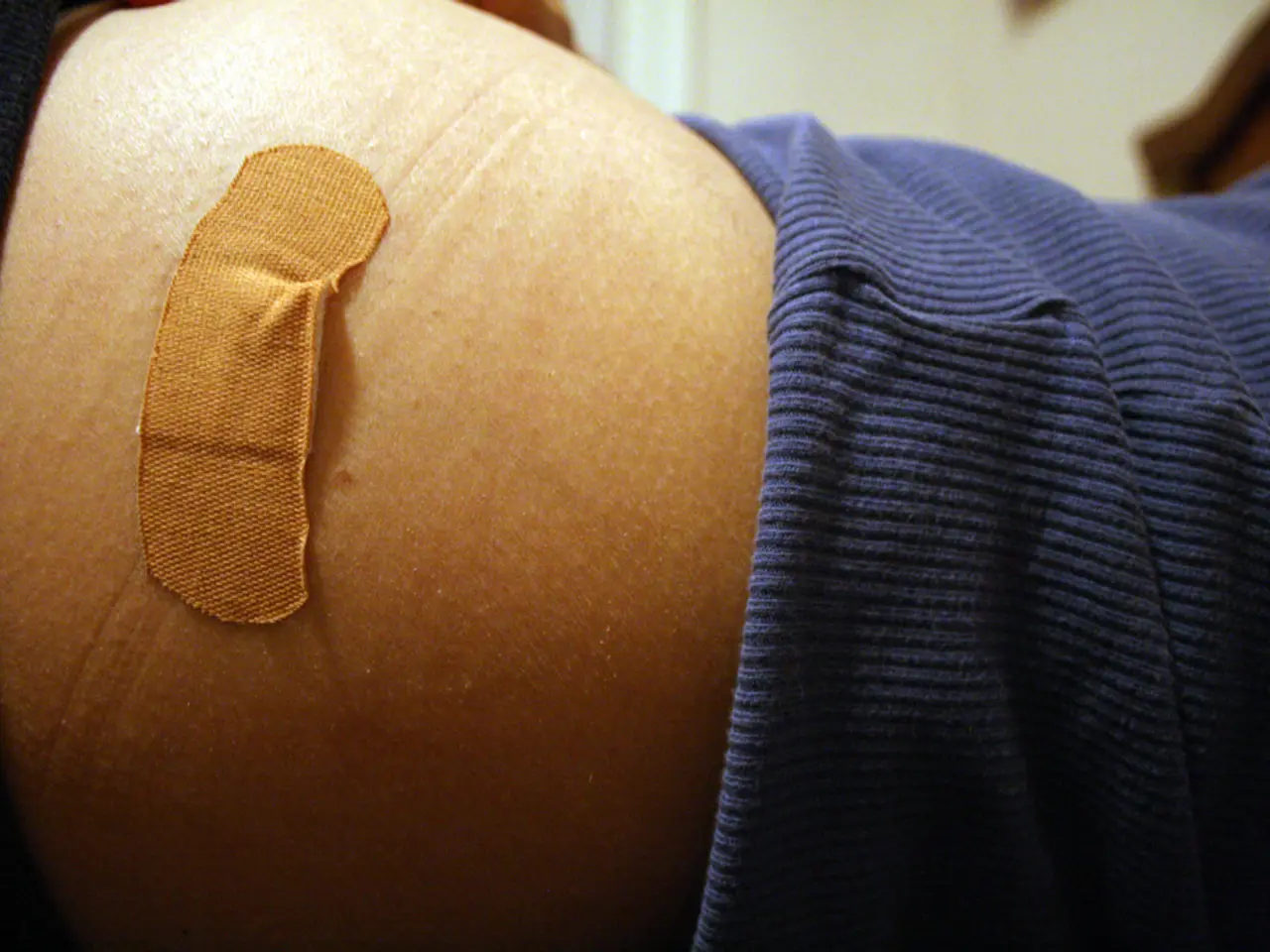C-section complication: Recognizing symptoms and protective measures
C-section, or Caesarean section, is a common surgical procedure used to deliver a baby. While it is generally safe, like any surgery, it carries a risk of complications, one of which is wound infection.
C-section wound infections can occur due to contact with harmful microbes, which may lead to various types of infections such as cellulitis or urinary tract infections. The bacterium Staphylococcus aureus is the most common cause, but other common bacteria like Enterococcus and Escherichia coli can also be culprits.
The signs and symptoms of C-section wound infections are crucial to recognize. Fever of 100°F (37.8°C) or higher, often accompanied by chills, is a common symptom. Redness and swelling around the incision or sutures, severe pain at the incision site, and foul-smelling, discolored, or pus-like discharge from the wound are also indicators. Other symptoms may include a burning sensation or pain while urinating, and blood in the urine if the infection has spread.
It's important to note that these symptoms often appear within a week after surgery and warrant prompt medical evaluation to prevent complications. If left untreated, C-section wound infections can lead to more serious conditions such as organ and space infections.
Prevention of C-section wound infections involves careful postoperative care. Maintaining cleanliness and dryness of the incision site, daily inspection of the wound for early signs of infection, following the doctor's advice on wound care, and managing underlying risk factors such as controlling diabetes, avoiding smoking, and maintaining a healthy weight are all essential steps. Promptly reporting any unusual symptoms to a healthcare provider for early diagnosis and treatment is also crucial.
Adequate postoperative care and early recognition of infection signs are crucial in minimizing infection risk and ensuring proper healing after a C-section. If infection is suspected, timely medical treatment, often with antibiotics, is necessary to avoid further complications.
In addition to these measures, prevention steps before and after surgery are equally important. Before surgery, maintaining a healthy weight, keeping blood sugar levels stable, and not smoking can help reduce the risk. After surgery, keeping the wound clean with soap and warm water, covering the wound for as long as the doctor advises, avoiding baths, hot tubs, and swimming pools, adhering to any prescribed courses of medication, and not wearing tight-fitting clothes are all recommended practices.
In conclusion, while C-section wound infections can be concerning, understanding the signs, symptoms, and prevention methods can help ensure a smooth recovery. If you suspect a C-section wound infection, seek medical attention promptly to prevent complications and ensure proper healing.
- In the context of science and medical-conditions, sclerosis refers to a hardening or stiffening of a tissue or organ.
- Predictive analytics can help identify patients at a higher risk of developing chronic diseases, such as atopic dermatitis or multiple sclerosis.
- Bipolar disorder, with its episodes of mania and depression, is a mental-health issue affecting millions worldwide.
- Psoriasis and psoriatic arthritis are autoimmune disorders that can lead to dry, scaly skin and joint pain.
- Alzheimer's disease, a degenerative disorder, is the most common cause of dementia in older adults.
- Dermatitis is an inflammation of the skin caused by various factors, such as allergies, irritants, or exposure to harsh chemicals.
- Macular degeneration, a common eye-health issue in older adults, can lead to vision loss.
- Migraines, a type of headache, can cause severe pain and may be accompanied by nausea and sensitivity to light.
- Multiple accidents and falls can be a precursor to chronic-kidney-disease in older adults.
- Asthma, a common respiratory-condition, can be managed with prep-medications and nebulizers to prevent abrupt attacks.
- The American Quality (AQ) standards focus on improving quality-of-care in various health-and-wellness areas, including hearing and digestive-health.
- Fitness-and-exercise is essential for the prevention of various chronic diseases, such as chronic-diseases like cancer and cardiovascular-health issues.
- Sexual-health is an important aspect of one's overall health, including proper education and disease prevention measures.
- Family-health is crucial, and many parents seek resources on family-health, child health, and parenting.
- Workplace-wellness programs aim to promote employee health, providing resources for mental-health, fitness-and-exercise, and stress management.
- In the realm of skin-care, therapies-and-treatments are available for a wide range of conditions, such as skin-conditions like psoriasis and HIV-related skin issues.
- Science has made significant strides in HIV treatments, with anti-retroviral therapies providing hope for those living with the virus.
- Womens-health encompasses various aspects, from reproductive health to menopause care and prevalent conditions like breast-cancer and cervical cancer.
- CBD is a compound found in cannabis that is used for its potential therapeutic effects on various conditions, such as chronic pain, anxiety, and epilepsy.
- Medically-assisted therapies can help manage chronic conditions, including chronic kidney disease and chronic-diseases like diabetes.
- In the Medicare health system, specific coverage plans may apply for procedures like C-sections, and Medicaid provides insurance protection for low-income families.
- Health-and-wellness programs for men, or Mens-health initiatives, often focus on prostate health, testicular cancer, and mental-health issues like depression and suicide prevention.
- Skin-care practices can help individuals maintain healthy skin and manage conditions like acne and eczema, promoting overall health in the hearing, eye, digestive, and fitness domains.




